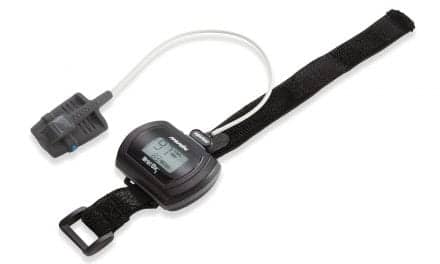Despite innovation and process shifts, clinical realities like staff rotation, patient transport, and more can create gaps that affect clinicians’ ability to provide the highest quality care.
As the healthcare industry adapts to a value-based care model, health systems are feeling pressure now more than ever to deliver care efficiently, effectively and consistently in hospital acute environments. With patient safety as a top concern, providers look to innovative technology in patient monitoring to track patients’ treatment and recovery. Despite technology innovation, gaps still exist that affect clinicians’ ability to provide the highest quality patient care. Technology – and the infinite amount of data it produces—comes with its own set of challenges in the hospital and when patients transition home.
The Current Challenges in Patient Monitoring
Hospitals have hundreds of medical devices, and with the increase of patient data, the challenge becomes how to streamline all of this data to one central point for clinicians to access and share data between departments. Some physicians today still receive updates through verbal and handwritten means, which can pose problems and be unreliable when a patient’s medication dose needs to be changed and the updated treatment routine needs to be communicated to multiple doctors assisting with this treatment. With the lack of complete data and rise of false alarms, clinicians are strapped for time, which forces them to spot checks on patients’ vital signs every few hours. Since a patient’s condition can worsen quickly, spot checks and inconsistent monitoring can often lead to a preventable problem: undetected patient deterioration.
Hospitals by nature are never stagnant—staff rotate in and out from departments for their shifts, patients are moved from one department to another, and technology may not be fully integrated or updated in real-time. Due to this always on-the-move environment, four of the biggest gaps in patient monitoring are a lack of continuous monitoring during transports, the influx in data that doesn’t provide clinicians with actionable insights, the inundation of bells and whistles from surrounding monitors, and the disjointed path for a patient’s transition from hospital to home. All of these are potential causes for variation in care, affecting clinical performance and impacting patient outcomes.
In an effort to address these holes in patient monitoring, providers are looking to connected care technology to improve patient transports, provide actionable insights, lessen the burden of alarm fatigue and implement a seamless transition from hospital to home.
Continuous Monitoring During Patient Transitions
A lot of attention is placed on the accurate and efficient collection, access and sharing of patient data, and the role EHRs and clinicians play. But one of the key areas that still needs attention is something that may seem almost rudimentary: capturing that data consistently without gaps. And most commonly, there’s a risk of not capturing the necessary patient data during in-hospital transport.
When patients are transferred from one department to another, clinicians often struggle with incomplete data records leading to inefficiency due to missing information or multiple systems operating independently. Hospitals need to consider transport monitoring that is integrated with traditional monitoring. Enhanced solutions for continuous patient monitoring can be some of the most effective tools for clinicians to ensure they are taking care of patients’ needs in an efficient and consistent manner.
Continuous monitoring solutions can address these data concerns, as patient data is steadily captured and integrated with the EMR for virtually gap-free patient records wherever they are in the hospital—from admission to discharge or in transport from department to department. Complete patient data gives clinicians a comprehensive view into a patient’s condition, allowing caregivers to reduce preventable medical errors, improve treatment outcomes and make the best care decisions for their patient.
In-hospital transport can be a dangerous phase of a patient’s time in the hospital, so having the most complete patient data during transport is critical to patient health and reducing transport time. If a patient were to suffer an adverse health event and need to be transported from the general ward to the intensive care unit, incomplete data records could hinder a clinician’s ability to make fast, informed clinical decisions for critical treatment. Clinicians rely on the most up-to-date medical records and vital signs for the complete picture of a patient’s health, and are constantly combating gaps in data between transports. With the help of continuous monitoring solutions, clinicians have a clearer view into a patient’s condition and the information needed to intervene earlier to potentially save a life.
Aggregated Data Insights for Critical Care Decisions
The goal with collecting more patient data is to ultimately receive greater insight to treat specific symptoms, prevent adverse health events and advance medicine to a value-based model. Before all of this is possible, providers need to address how this data is being aggregated and the actionable insights coming out of it. Aggregating clinical information is still a work-in-progress for many hospitals. In theory, all information should be entered into the patient’s EHR, which should be accessible to anyone on the care team at any location throughout the hospital, but it’s not that simple due to potential lag time in updating the patient record or if the clinical information systems and devices within the hospital don’t talk to each other.
It’s important to provide care teams with the information they need, when they need it, but’s equally important to ensure the information available isn’t just data for data’s sake. Implementing continuous, on-the-go monitors that transition patient data from floor to floor and give clinicians easy access to information is critical. With more integrated data, everything is centrally located, resolving the pain point of too much data in too many places and doctors can quickly see a patient’s vital signs and medical records when providing treatment. This type of holistic vantage point provides staff with what they need to know to care for their patients.
Aggregated data is just one piece of the puzzle when it comes to patient data. With the influx of data, clinicians are looking to technology that can turn this clinical information into actionable insights for them to intervene earlier and make the best decisions for their patients. As we look to the role of patient data in the future of medicine, artificial intelligence (AI)–enabled solutions in particular are promising. These solutions can adapt to specific patient populations’ monitoring needs and can help clinicians make decisions faster, moving toward the goal of more specialized care.
Combating Alarm Fatigue
In an effort to improve care, the healthcare industry has introduced tools that incorporate smart alarms to alert the clinicians when a patient’s condition is changing. While these solutions are designed to help clinicians, these alarms have become a double-edged sword. These technologies do promptly alert clinicians and nurses to patients’ issues when needed, but we are seeing that they can be so sensitive that they often result in false alarms. It’s an unfortunate reality in healthcare that the monitoring and alarming systems designed to help “keep watch” over patients and alert clinicians to a situation has in and of itself become a problem. Due to the false alarms and constant alerts, clinicians are often forced to make judgment calls about what is and isn’t an urgent alarm, resulting in the very issue that advanced technologies aim to avoid: human error.
Many healthcare organizations todays are adopting better alarming systems, but they still aren’t “smart” enough. Too many alarms are still being disregarded because care teams can’t determine if they are important. This need for better alarming context and solutions that align with the types of patients being treated is critical for better patient monitoring and consistent care in the hospital.
Technologies are now available that can help clinicians triage and prioritize alarms, arming clinicians with the insights needed to enhance patient safety. By setting smarter alarm limits, clinicians can reduce non-actionable alarms, drastically decreasing stress for both patients and clinical staff. Solutions like early warning scoring (EWS) technologies obtain a number of real-time patient vital signs and produce a single benchmark that alerts clinicians if the patient is showing signs of distress. Instead of managing several separate alarms, caregivers can rely on a single alarm. With these smart alarms, clinicians can reduce the potential for human error and help their patients on their path from the hospital to recovery in their homes.
Transitioning Care from the Hospital to Home
As the healthcare industry shifts its focus to improve the patient experience across the healthcare continuum, providers are looking for programs that make seamless transitions for patients leaving the hospital, keeping the patients’ health and safety at top of mind. Since reducing readmissions continue to be a focus for health systems, clinicians need to leverage remote monitoring technologies to ensure that when patients are discharged, they will recover in the comfort of their own home with minimal risk of complications.
Remote monitoring technologies, such as connected sensing, can help ensure that a patient’s vital signs are being consistently monitored even outside of the hospital, enabling clinicians to contact the patient remotely from the hospital to address any irregularities. Connected sensing technology cannot only improve the patient recovery time, but also keep the patient safe at the point of care.
In addition to connected sensing, the healthcare industry is turning to connected care technology and AI as increasingly critical components to understanding and treating patients at home. This remote monitoring technology offers numerous benefits for both caregivers and patients by providing collaborative technology platforms, patient data and monitoring tools. With these comprehensive data, providers are able to focus on patient outcomes, while focusing on those that require immediate response and attention. Providers can now stay in better touch with their patients, while also focusing on those who require immediate response and attention. This technology allows clinicians to better understand a patient’s therapy and troubleshoot issues early on to help increase therapy adherence.
Connected care is critical for patients with chronic conditions, such as sleep apnea and COPD, as it can lower the cost burden associated with these conditions, as well as help increase the patient’s adherence to treatment. By staying connected with their providers, connected care allows a patient management or engagement service to motivate the patient to stay adherent to their treatment regimen in the comfort of their own home. These insights allows patients to track their progress or set reminders to take action, as well as receive motivational messages from their physicians to encourage them to stay on track.
Having solutions in the healthcare industry that offers remote monitoring, coaching and engagement is important for adherence, but combining all three applications is what makes the difference in patient compliance, and can ultimately change how we deliver personalized care.
Improving Patient Outcomes with Connected Care
The move toward value-based outcomes puts heightened emphasis and expectations that quality patient care is continued in the hospital to when a patient is discharged. Providers today need accurate, transparent processes and smarter, integrated solutions to help clinical staff make faster, more consistent decisions based on patient condition and history. Connected care technologies can help with this by providing continuous monitoring throughout the hospital, aggregating data into clinical-decision insights, implementing smart alarms and improving patient’s recovery at home. When we close the current gaps in patient monitoring with connected technology, we’ll experience more consistent patient care, seamless patient transitions, improved outcomes and one step closer to a value-based care ecosystem. RT
Peter Ziese, PhD, MD, is Business Leader of Patient Monitoring, Philips. For more information, contact [email protected].









